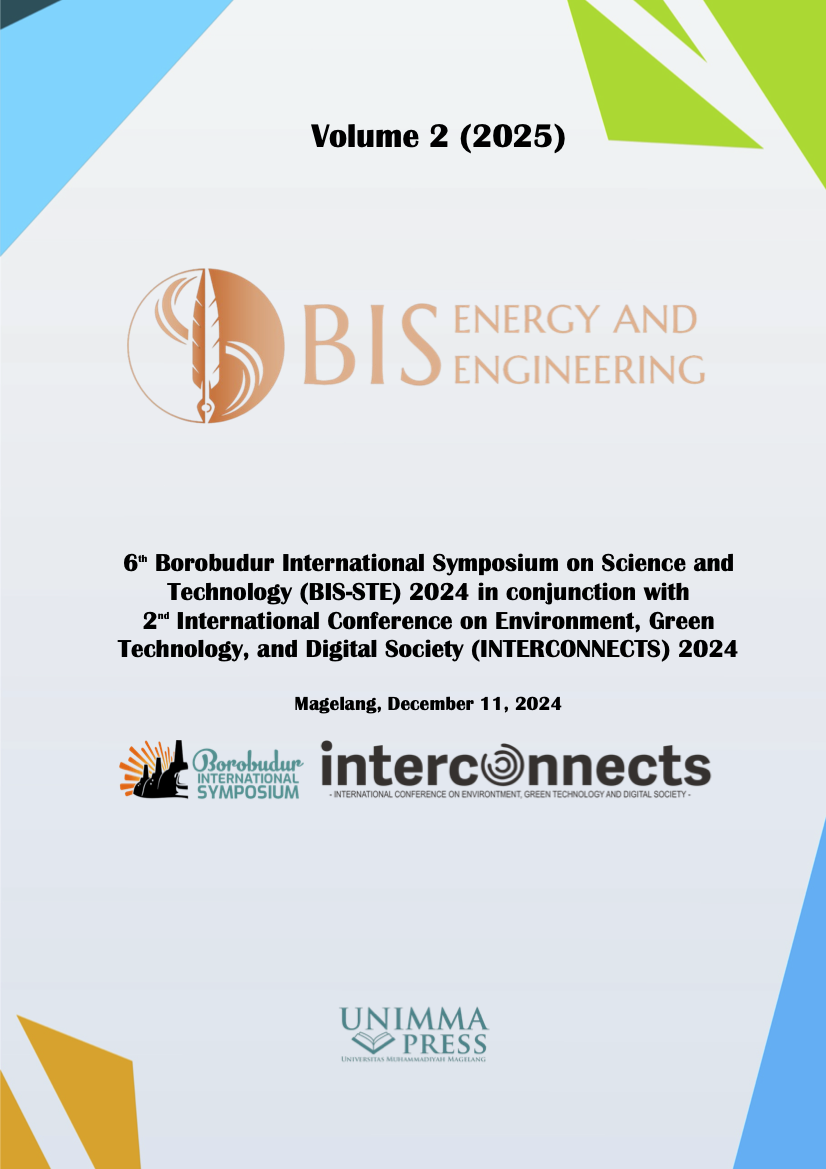Experimental study on crashworthiness in double crush tubes of polylactic acid material
Keywords:
Crashworthiness, Polylactid Acid, Compression testAbstract
The crush tube for crashworthiness is one of the automotive components crucial for absorbing impact energy when an accident occurs. It is necessary to pay attention to determining the crush tube material depending on the automotive components used. The research aims to analyze the ability to absorb energy in double tubes of Polylactic Acid material made on a 3D Printing machine to test the compression. The double crush tube combines a round outer tube and an inner tube which varies in shape: round, triangular, rectangular, pentagonal, hexagonal, hexagonal, and octagonal. The method is to create samples of crush tubes using a 3D printer machine and then conduct experimental compression testing to obtain a graph of the distribution load for each crush tube. The crashworthiness parameters used are absorption of specific energy (SEA), maximum collapse force (Fmax), and efficiency of crush force (CFE). The results obtained by the smallest total energy absorption (TEA) of 98.77 Joules were for a tube in a heptagonal shape. Meanwhile, the tube that absorbs the most energy is a round tube of 149,154 Joules.
References
[1] S. Bhutada and M. D. Goel, “Crashworthiness parameters and their improvement using tubes as an energy absorbing structure: an overview,” Int. J. Crashworthiness, vol. 27, no. 6, pp. 1569–1600, 2022, doi: 10.1080/13588265.2021.1969845.
[2] T. J. Reddy, V. Narayanamurthy, and Y. V.D. Rao, “Study on crush tube’s geometric cross-sections and topology for axial crashworthiness,” Def. Sci. J., vol. 70, no. 3, pp. 249–259, 2020, doi: 10.14429/dsj.70.14345.
[3] F. Dionisius, J. Istiyanto, T. Endramawan, and Andri, “Optimasi Desain Crashworthiness pada Tabung Persegi Berdinding Tipis Dengan Variasi Crush Initiator : Stripe - Parallelogram - Trigon,” J. Teknol. Terap., vol. 4, no. 1, pp. 48–54, 2018, [Online]. Available: https://doi.org/10.1016/j.matdes.2018.07.008.
[4] W. Altenhof, S. Paonessa, N. Zamani, and R. Gaspar, “An experimental and finite element investigation into the energy absorption characteristics of a steering wheel armature in an impact,” Int. J. Impact Eng., vol. 27, no. 2, pp. 197–212, 2002, doi: 10.1016/S0734-743X(01)00038-0.
[5] R. Velmurugan and R. Muralikannan, “Energy absorption characteristics of annealed steel tubes of various cross sections in static and dynamic loading,” Lat. Am. J. Solids Struct., vol. 6, no. 4, pp. 385–412, 2009.
[6] J. Paz Mendez, J. Díaz García, and L. Romera Rodríguez, “Crashworthiness analysis and enhancement of aircraft structures under vertical impact scenarios,” AIAA Scitech 2019 Forum, no. February 2020, 2019, doi: 10.2514/6.2019-0778.
[7] Y. Pringeten et al., “Crashworthiness Analysis of the Impact Modules of Indonesian High-Speed Train Considering EN 15227,” pp. 33–40, 2023.
[8] F. Djamaluddin, S. Abdullah, A. K. Ariffin, and Z. M. Nopiah, “Finite element analysis and crashworthiness optimization of foam-filled double circular under oblique loading,” Lat. Am. J. Solids Struct., vol. 13, no. 11, pp. 2176–2189, 2016, doi: 10.1590/1679-78252844.
[9] B. Hao and G. Lin, “3D Printing Technology and Its Application in Industrial Manufacturing,” IOP Conf. Ser. Mater. Sci. Eng., vol. 782, no. 2, 2020, doi: 10.1088/1757-899X/782/2/022065.
[10] D. Hidayat et al., “Investigation on the Crashworthiness Performance of Thin-Walled Multi-Cell PLA 3D-Printed Tubes: A Multi-Parameter Analysis,” Designs, vol. 7, no. 5, 2023, doi: 10.3390/designs7050108.
[11] C. Tao, X. Zhou, Z. Liu, X. Liang, W. Zhou, and H. Li, “Crashworthiness Study of 3D Printed Lattice Reinforced Thin-Walled Tube Hybrid Structures,” Materials (Basel)., vol. 16, no. 5, 2023, doi: 10.3390/ma16051871.
[12] P. L. Marpaung, “Material Biokomposit Berbasis Poly Lactic Acid (PLA) untuk Komponen Industri Otomotif,” Angew. Chemie Int. Ed. 6(11), 951–952., vol. 15, no. 1, pp. 2013–2015, 2017.
[13] H. D. Gopalakrishna, P. Panda, and P. Jois, “Crashworthiness of Automobile in a Vehicle-To-Pole Crash Simulation,” Int. J. Automob. Eng. Res. Dev., vol. 4, no. 2, pp. 1–10, 2014.
[14] I. Renreng, M. F. Hidayat, and F. Djamaluddin, “Crashworthiness analysis of octagonal-inner double tube with different thickness under offaxis oblique load,” Int. J. Mech., vol. 14, pp. 226–232, 2020, doi: 10.46300/9104.2020.14.29.
[15] F. Djamaluddin, S. Abdullah, A. K. Arrifin, and Z. M. Nopiah, “Crush analysis of the foam-filled bitubal circular tube under oblique impact,” IOP Conf. Ser. Mater. Sci. Eng., vol. 308, no. 1, 2018, doi: 10.1088/1757-899X/308/1/012040.
Downloads
Published
Conference Proceedings Volume
Section
License

This work is licensed under a Creative Commons Attribution-NonCommercial 4.0 International License.

